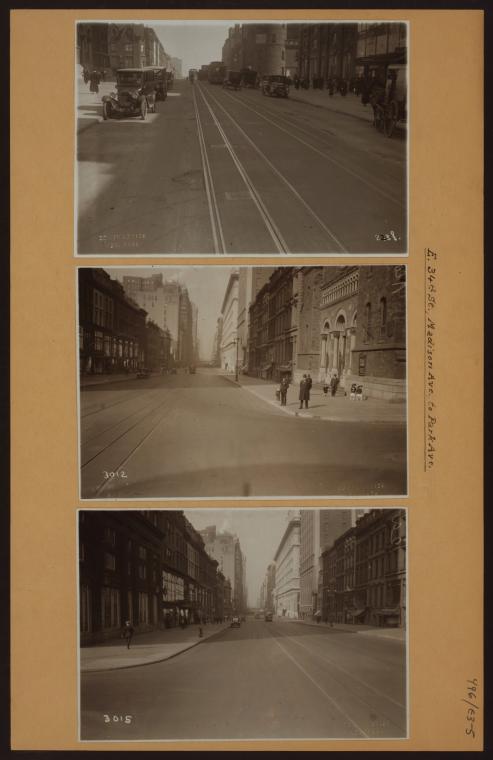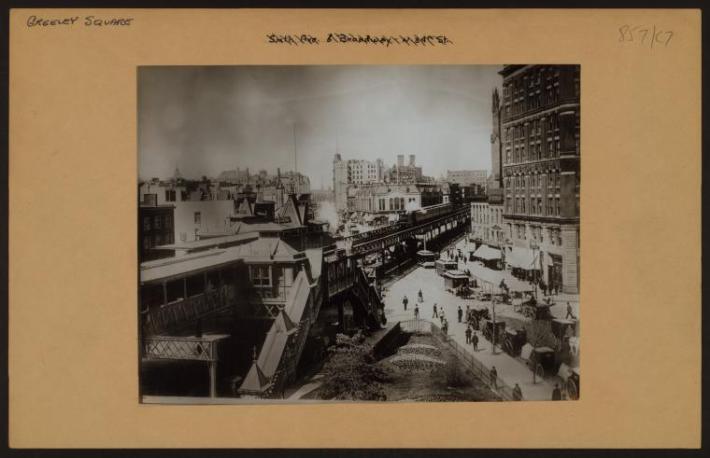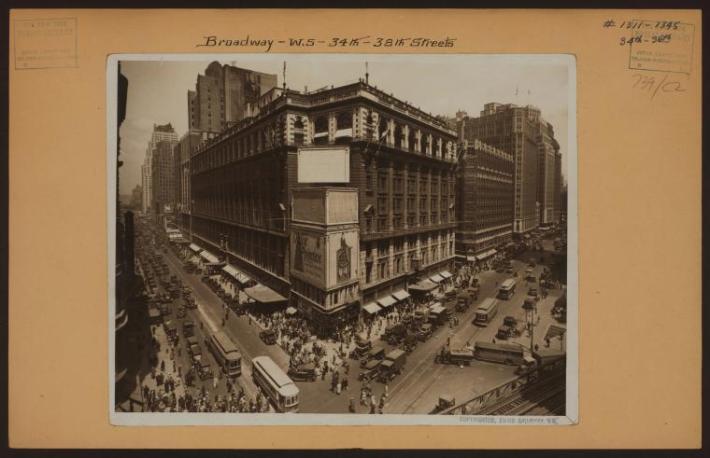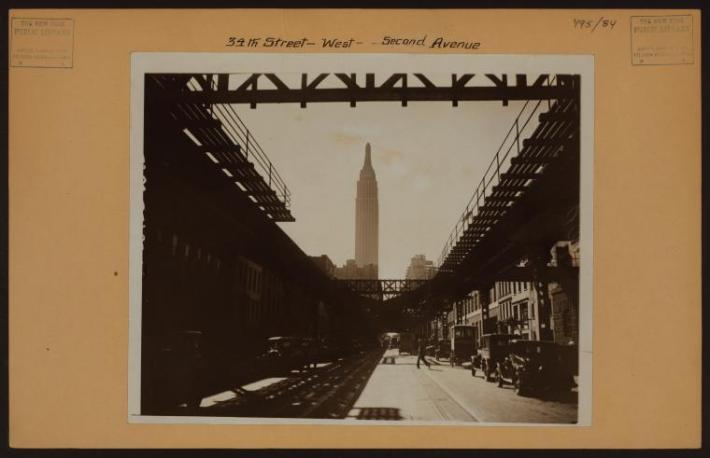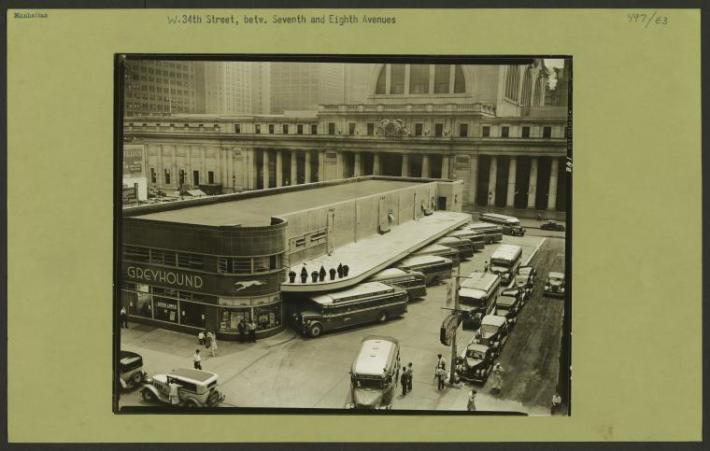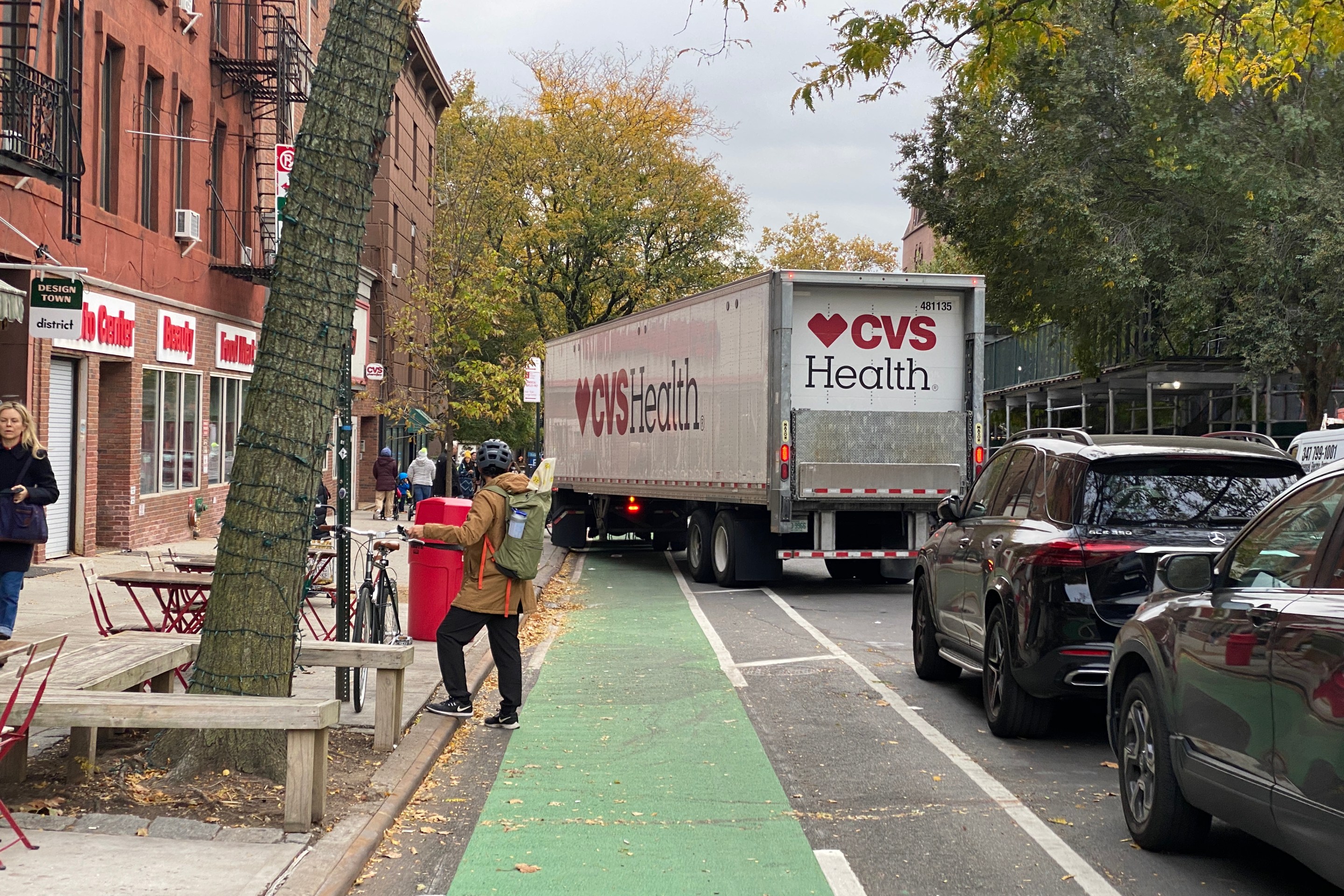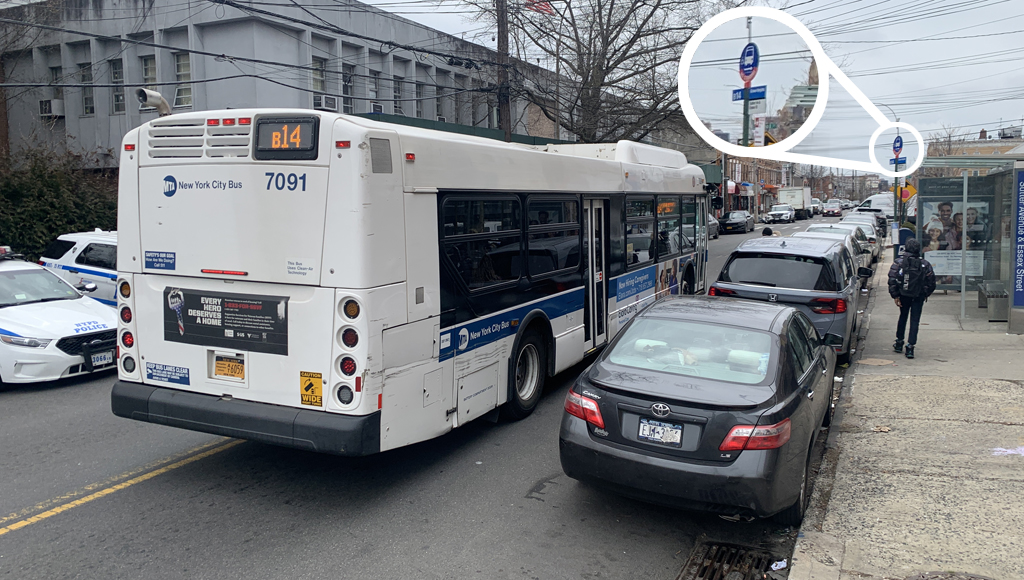In the media hyperventilating over plans for 34th Street that led up to last night's cancellation of the pedestrian plaza between Fifth and Sixth Avenues, the biggest constant was the fear of change. An editorial in the Observer on Tuesday summed up the strange preference for the status quo: "From river to river, 34th Street moves cars, trucks, buses and pedestrians as efficiently and quickly as humanly possible in one of the world's most crowded pieces of real estate."
There was no indication that improvement is achievable, nor any understanding that the least efficient modes on 34th Street -- private cars and taxis -- slow down the far greater number of people who take the bus, and make the street more dangerous and unpleasant for the even greater number of people on foot.
What the naysayers never seem to acknowledge is that 34th Street has changed and changed again over the course of New York City's history. To argue that 34th Street should never change again is to argue that at some point in the mid-20th Century, the city's planners hit on a solution that was perfect for all eternity.
Since then we've learned a lot about how traffic works. We know that traffic volumes are not constant, and that when streets change, drivers adjust their decisions and their behavior. We know that on 34th Street and other major crosstown streets in Manhattan, traffic is strangling transit service, slowing buses to walking speeds. And we know that other cities have successfully created transit malls in their central shopping and business districts.
So we're posting some photos of what 34th Street once looked like, not because we want to return to the good old days, but to show that there's nothing sacred about the current design of the city's streets.
Looking back, it's clear that at least until painted bus lanes were installed along 34th Street in 2008, the current configuration of the street gives more space to the automobile than any before it. In 1911, for example, the city took seven and a half feet from each sidewalk on 34th Street in order to widen the street. 34th Street has changed a lot, and it will have to change again to work well for New York City in the 21st Century.
